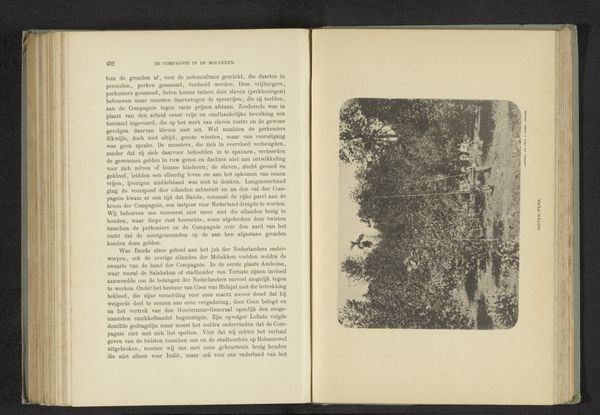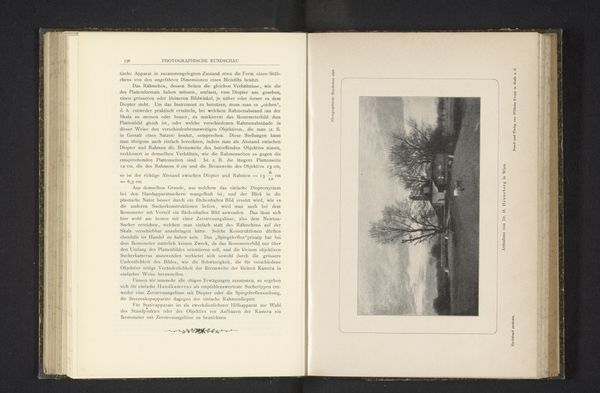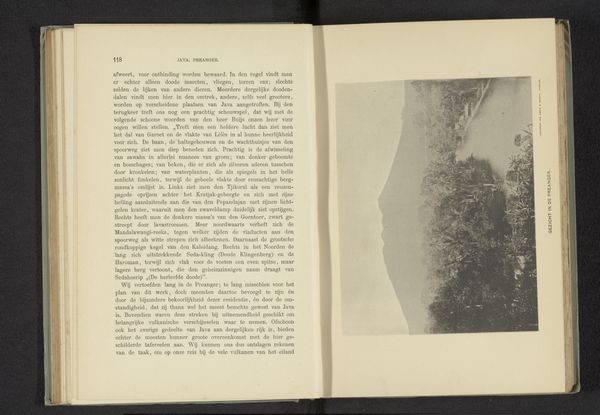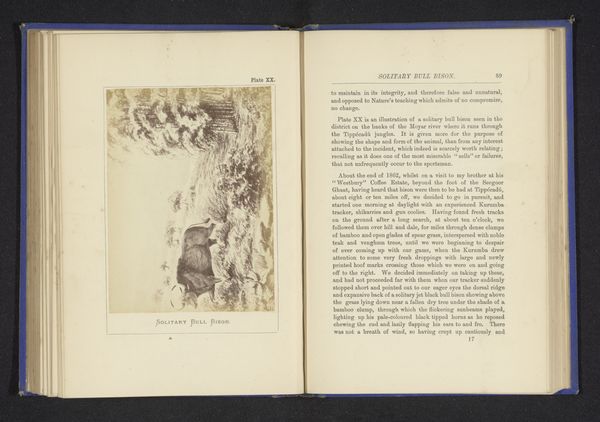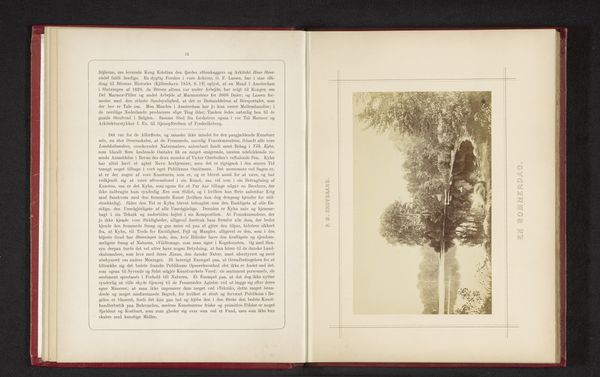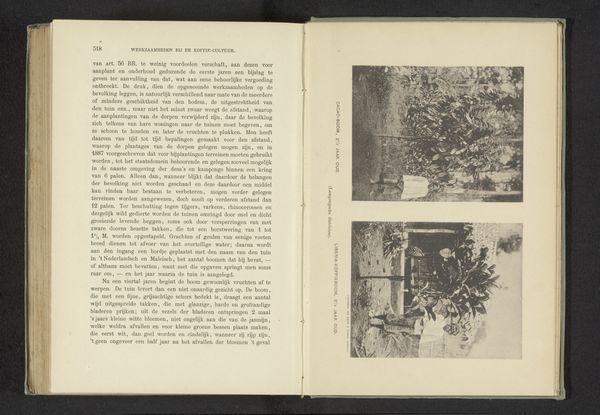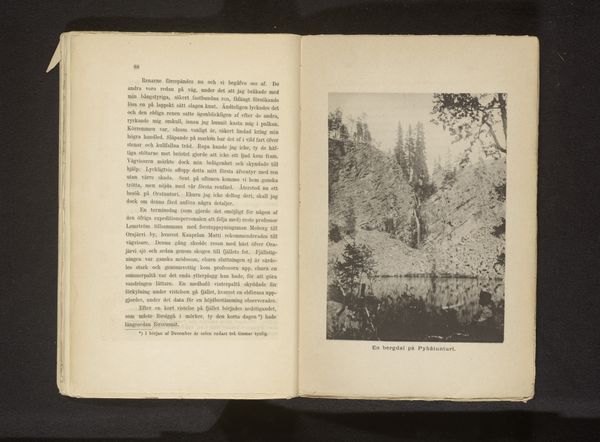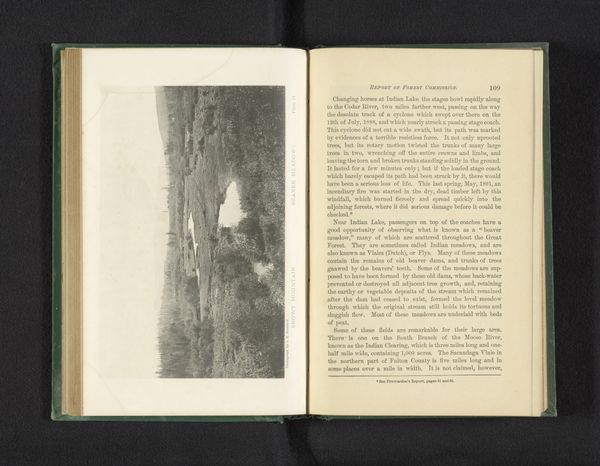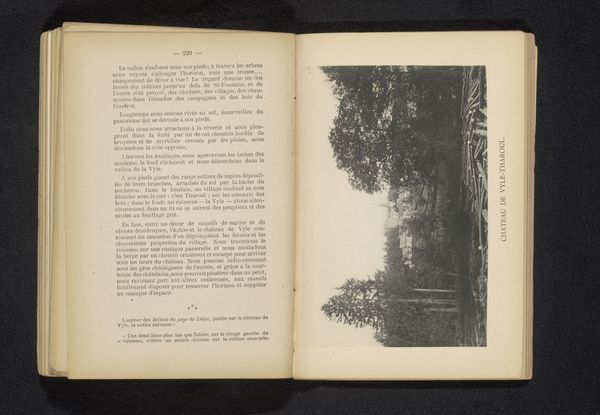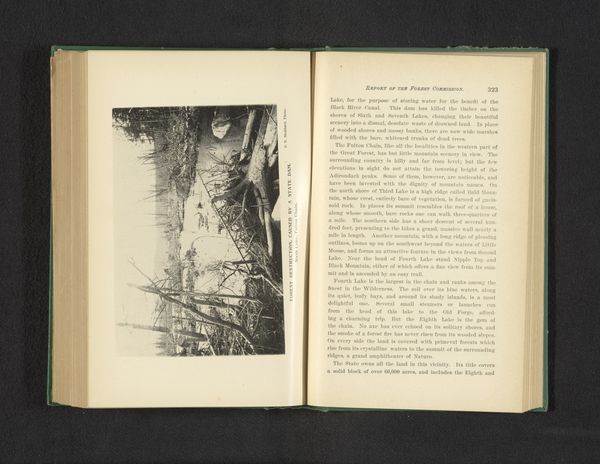
print, photography
#
lake
# print
#
landscape
#
river
#
photography
Dimensions: height 125 mm, width 163 mm
Copyright: Rijks Museum: Open Domain
Curator: Let’s delve into this photogravure print, "Gezicht op de Ombilin bij het Singkarakmeer op Sumatra," believed to be from before 1894 and held in the Rijksmuseum collection. Editor: Initially, a melancholy serenity strikes me. The monochrome palette contributes to a sense of quiet reflection. I’m also immediately drawn to how the photographic image sits nestled within the opened book itself—the composition highlighting that textual framing device. Curator: Absolutely, and the textual framing reinforces its position within a narrative, almost like a visual record extracted from a travelogue of that era. Consider the symbolic weight of capturing such a vista during a time of colonial expansion—what kind of cultural power is being displayed? Editor: Good point, I find that the artist has an interesting choice to focus on the natural scene by playing with tonal contrast between the light-infused, cloudy sky above and the shadowed shrubbery framing the water itself. It's a clever construction; that contrast really draws your eye into the middle ground. The interplay of light and shadow hints at something beyond simple documentation. Curator: The “something beyond” likely ties into the viewer's expectations. The Singkarak lake might have signified the exotic unknown—the symbolic value residing not just in the pristine nature itself but what it represents to someone on the outside: wealth, beauty, a source of resources. Editor: Yet there is a compositional element which seems more universal to me: the trees are used almost like theatrical curtains drawing back to reveal that idyllic landscape and creating a serene almost transcendental depth. It pulls you in. Curator: You're right, and these kinds of compositions can carry their own political weight too. Who can access that sublime space? For whom is this serenity meant to be experienced? These are essential symbolic questions when grappling with such works, questions tied to colonialism, privilege, and even ownership. Editor: It’s quite stimulating to examine this interplay between form, the visual symbolism of "exotic" landscapes, and the larger socio-historical implications it evokes. I notice, too, how the imperfection of the print seems somehow deeply connected to the overall feeling. Curator: I agree completely. The photogravure invites reflection on representation itself and underscores the fact that what is absent is equally revealing as what the picture explicitly conveys.
Comments
No comments
Be the first to comment and join the conversation on the ultimate creative platform.
